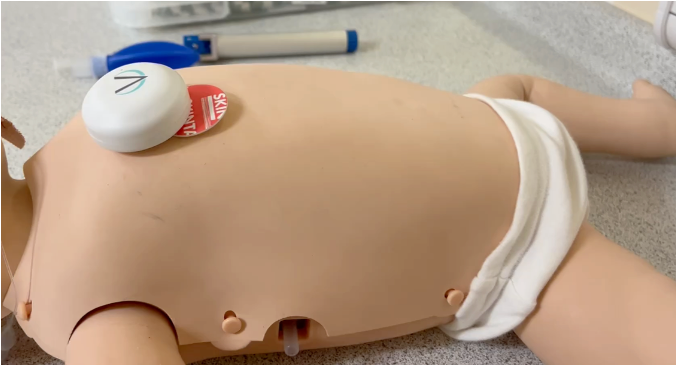Insider view: Jon Hoeksma
- 31 December 2010

2010 began with the NHS puzzling out how to deliver unprecedented efficiency savings. One general election later, and 2011 is beginning with the service also facing a radical reorganisation and a helter-skelter plunge to a full blooded market.
The service now has to find those £20 billion of efficiency savings by 2014-15. Over the same period of time, deep cuts will be made in NHS management, strategic health authorities and primary care trusts will be abolished and GP consortia will finally be given direct responsibility for £80 billion of care.
At the same time, the DH will be reorganised, trusts will become foundation trusts, and local authorities will get new roles in public health and social care. Small wonder NHS chief executive Sir David Nicholson recently described the reforms as “so big, they can be seen from space”.
Also small wonder that the government has decided that it needs an “information revolution” to underpin the ambitious reforms.
Consultation on the revolution will close on 14 January. The challenge for the rest of 2011 will be whether the NHS will be able to move from consultation to tackling the really thorny information challenges created by a decentralised, digitised healthcare market.
Change you can see from space
Intriguingly, it is on public sector data transparency and data re-use that the government shows signs of genuine radicalism. But if information is really going to underpin public service modernisation, the agenda will need to be nurtured and given legislative force.
The government has said that NHS providers will be required to publish far more information on what they spend, the quality of care they deliver and outcomes of that care.
It has also said that it wants to see a new ‘market’ in third-party information. Already we are seeing third party providers taking NHS data feeds to publish data on hospital infection rates, while ex-health minister Lord Darzi has launched an app for rating hospitals.
Yet whether a ‘health infomediary’ market really exists remains to be seen. If there is, and if its products start to be linked to trust revenues, then we are likely to see some interesting NHS data disputes.
Dr Foster has been publishing its Hospital Guide for ten years. Yet its latest league tables in November led to some leading trusts challenging rankings and refusing to take part.
The axe that didn’t fall
For big, complex IT the National Programme for IT in the NHS remains the biggest show in town. NPfIT was scaled back in September – with a further £700m cut from its overall budget. But it was not quite scrapped as many had expected.
For the time being at least, the programme, though much diminished, still cast a long shadow. As recently as April, in the final days of the last government, the DH signed a revised local service provider deal with BT for London and parts of the South.
A new deal for the North, Midlands and East may be in the offing; despite the misgivings of MP and PAC member Richard Bacon, who has now persuaded the National Audit Office to look into the BT deal and whether it represents value for money.
On the project front, the Summary Care Record was also spared the predicted axe, proving impervious to critical DH-commissioned reviews and studies and the hostility of the BMA.
More vulnerable were the NHS Enterprise licensing deals which were each axed, most notably that with Microsoft. Perpetual licenses mean the NHS hasn’t yet switched to open source alternatives – with the exception of parts of Scotland – but trusts will soon face increased local costs as the result of a one-off national cut.
Living with the legacy of NPfIT
The tension between centripetal and centrifugal forces is likely to remain. At eHealth Insider Live 2010 in November, Department of Health director general of informtics Christine Connelly promised trusts greater local choice of systems. But she said ruefully that this would need to be squared with the LSP contract commitments.
It would be one thing if there were a blank sheet of paper to work with, but NPfIT contracts remain difficult facts to be lived with until 2014 and beyond. So choice, NPfIT style is likely to be of the Model T Ford colour scheme variety (anything you like, as long as it’s black).
Similarly, all the indications are that the Southern ASCC procurements that are now being rekindled are unlikely to deliver ‘choice’ in a way that would satisfy a dictionary editor.
Small wonder then that 2010 saw a growing number of trusts procure outside the national programme for local systems that met their particular needs.
Short of money, more trusts have begun looking at integration and portal approaches that enable them to get more out of their existing systems, or specific clinical capabilities.
Trusts are also taking an urgent look at how they can use information technology to deliver business efficiencies. High on the list are areas like digital dictation, document management, kiosks to reduce the not inconsiderable pain of booking in patients, and giving enterprise mobile tools to community-based staff.
They may not be EPR projects but they do meet specific needs and can deliver clear savings. Outsourcing deals are also likely to feature large, as trusts look to shift back office functions to NHS Shared Services or private sector competitors. Also expect to see entire IT departments outsourced.
Taking aim at targets
Another problem for the NHS, its IT departments and their suppliers is that no matter how much ministers genuinely wish to have a bonfire of red tape, every central initiative is like a Hydra, creating a legion of new reporting requirements.
The previous government’s 18-week referral to treatment times spawned an entire industry of software and rules surrounding timing and stops. Just as people were getting to grips with it the target was abolished in April, and since then waits have started to creep up; even though the wait is a manifesto commitment.
One of the big questions for the coming year is whether ministers will be able to resist creating new measures and short-term targets as the strains really begin to tell in the health service.
Or, indeed, whether they will be able to stick with their pledge to implement the latest round of reforms – and no more for the five year term this government has promised it will serve.




